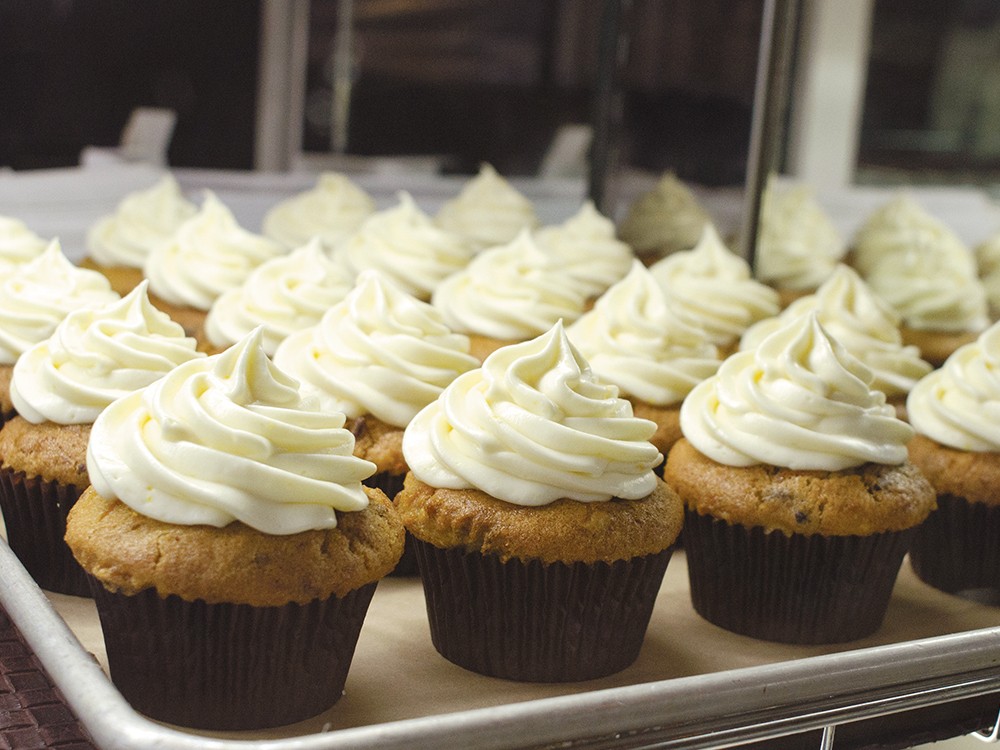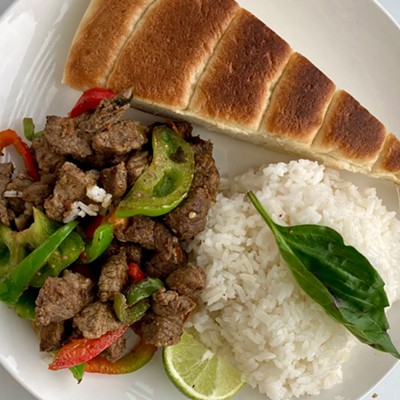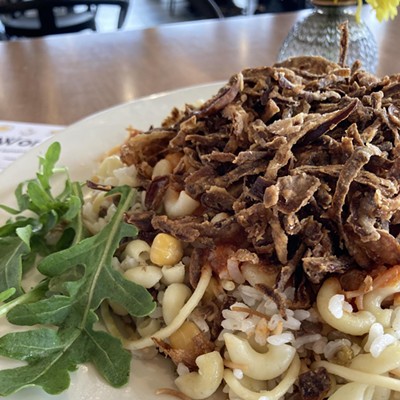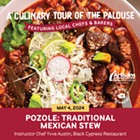Looking at the case of carefully labeled fruit bars and coffee cake squares at Boots Bakery, Shallan Knowles asks just to be sure: “And those are gluten-free, right?”
It’s been five years since Knowles was diagnosed with celiac disease, an autoimmune disease that prevents people from digesting gluten, a protein found in wheat and other grains. Driving home after getting the diagnosis, she pulled into a Value Village parking lot when her husband called and told him, through tears, that she couldn’t eat anything ever again.
She tells the story with a smile now, because it hasn’t turned out that way at all.
In fact, she’s never felt healthier, and gluten-free food has never been so available. Dozens of local restaurants pepper their menus with icons indicating gluten-free dishes. Wild Sage has a full menu of gluten-free options, from appetizers to desserts.The Rusty Moose rolled out a new menu with training for the whole staff. All the breadcrumbs at Geno’s are gluten-free by default. The pioneering White Box Pies has been joined by a number of local shops offering gluten-free baked goods — and that’s not even getting into the aisles of gluten-free products at Huckleberry’s and more mainstream grocery stores that have popped up to fill consumer demand.
“Spokane has one of the best gluten-free scenes of everywhere I’ve traveled,” Knowles says.
Through Gluten Free Spokane, the website she runs with her husband Knowles has become an advocate for the growing number of people who eat gluten-free and the restaurants that serve them. But misconceptions persist about what “gluten-free” really means, and that confusion can be dangerous.
“I appreciate people putting up with my neuroses of checking and double-checking,” she says. “When I get careless is when I get sick.”
Research indicates that celiac disease affects about 1 percent of the population, many of whom are undiagnosed. Another 6 percent have gluten sensitivity, which has similar symptoms without the telltale intestinal damage. Others have wheat allergies or other medical reasons to avoid gluten, like arthritis or irritable bowel syndrome. But in a recent survey, a full 30 percent of Americans said they want to cut down or avoid gluten, and the fastest-growing segment are those who eat gluten-free by choice for hazier health reasons. They just feel better.
Alice Bast, the founder of the National Foundation for Celiac Awareness, recalls an “a-ha moment” when sharing the stage with a Food Network chef for a program about gluten-free food. After telling her story — how she finally was diagnosed, after multiple miscarriages and seeing her mother die young of cancer, which is a long-term risk of undiagnosed celiac disease — the chef told her he’d been cooking gluten-free without realizing it was related to an actual disease.
A decade ago when the foundation was started, most restaurant workers would stare blankly at the term “gluten-free.” Now almost everyone recognizes it, Bast says, but most still fail a simple quiz about kitchen protocols.
“They don’t know what that means to someone with a medical necessity,” she says.
At some point, the trendiness of gluten-free eating eclipsed the original medical purpose. Starlets like Jessica Alba, Scarlett Johansson and Miley Cyrus have tweeted and raved about going gluten-free, adding to the “craze” and “fad diet” label. In this summer’s hit comedy This Is The End, Seth Rogen’s role as the clueless Hollywood version of himself is sold with a joke about his adherence to a gluten-free diet he doesn’t understand. “Do you even know what gluten is?” his friend asks skeptically.
The “celebritization” of gluten-free eating is a double-edged sword, Bast says. More people are aware of it, and gluten-free options are better than ever before — tastier, more affordable and more available.
“But is it safe? We’re still working on that,” she says.
The foundation is pushing for a formal Federal Drug Administration ruling on what “gluten-free” actually means, in specific parts-per-million terms, as a standard for manufacturers who make and label food products.
Thursdays is gluten-free pastry day at Taste Cafe, and the gluten-free items have to be made first thing in the morning before there’s any flour in the air. No one asked for gluten-free when they opened almost five years ago, says co-owner and pastry chef Hannah Heber. Now they get requests every single day.
“It’s to the point where I can barely keep it in the case. It sells out every Thursday, usually within a couple of hours,” she says.
Gluten-free Thursdays started after Heber developed a wheat flour allergy. She now wears a mask while making the regular pastries, and took on the challenge of making gluten-free pastries that are indistinguishable from the traditional versions. A lot of gluten-free pastries are gritty because of the rice flour, she says. Her secret is making her own mixes of different Bob’s Red Mill gluten-free flours.
“To be honest, the more creative stuff is always going to be the gluten-free now, because I know I can try it,” she says.
She takes a number of precautions to avoid cross-contamination: Gluten-free products are made with different mixing bowls and measuring spoons, mixed by hand to avoid the mixer and baked alone before anything else goes in the oven.
Even with the precautions, Taste cannot be fully celiac-safe since it’s not a dedicated gluten-free kitchen, and Heber will always tell people that. It’s the same at Boots, where Knowles will get warned that they can’t guarantee it’s safe.
“When somebody says that to me — ‘You have celiac, you shouldn’t be eating here’ — they get what it means enough that I trust them,” she says.
Every person who needs to eat gluten-free has cautionary tales about carelessly placed breadbaskets or gluten hiding in supposedly gluten-free sauces. Restaurants get their share of confusing signals, too — guests who order full gluten-free meals, then wash them down with a beer (which contains gluten) or order a side of fries without worrying what else is going into the fryer.
For someone with celiac disease, Knowles says, it’s not as simple as just having a gluten-free pasta substitution on the menu. Any trace amount of gluten could cause a reaction, which she describes as similar to a really bad hangover with digestive issues.
“We need to know: Is the pasta cooked in a different water?” she says. “Are you removing it from that water with a different set of tongs or strainer? Is it going on a clean plate? Are you slicing bread right next to where you’re dishing this up? We think about all these things that someone who’s just choosing to have gluten-free might not be aware of.”
At Fusion Flours near Northtown Mall, owner Tara Wright has created a gluten-free haven where the whole kitchen and everything in it is completely gluten-free — the pizza crusts, the hamburger buns, cakes and other treats. After suffering from undiagnosed celiac disease for years, she started experimenting with her own gluten-free products and started making gluten-free pizza dough for local restaurants several years ago. The Fusion Flours storefront opened a few months ago.
“A lot of people have heard my story,” she says, “and they want to come in and tell me theirs.”
Plenty of hearty meals are naturally gluten-free — steak, for example, or huevos rancheros — but sometimes that’s not good enough when everyone else gets to eat pizza. So her goal is to make her gluten-free products as close as possible to the standard wheat version, and the best part is seeing children who are used to hearing “no” light up when they’re allowed to pick anything they can see.
“It’s just really gratifying to see their smiles,” she says.
















